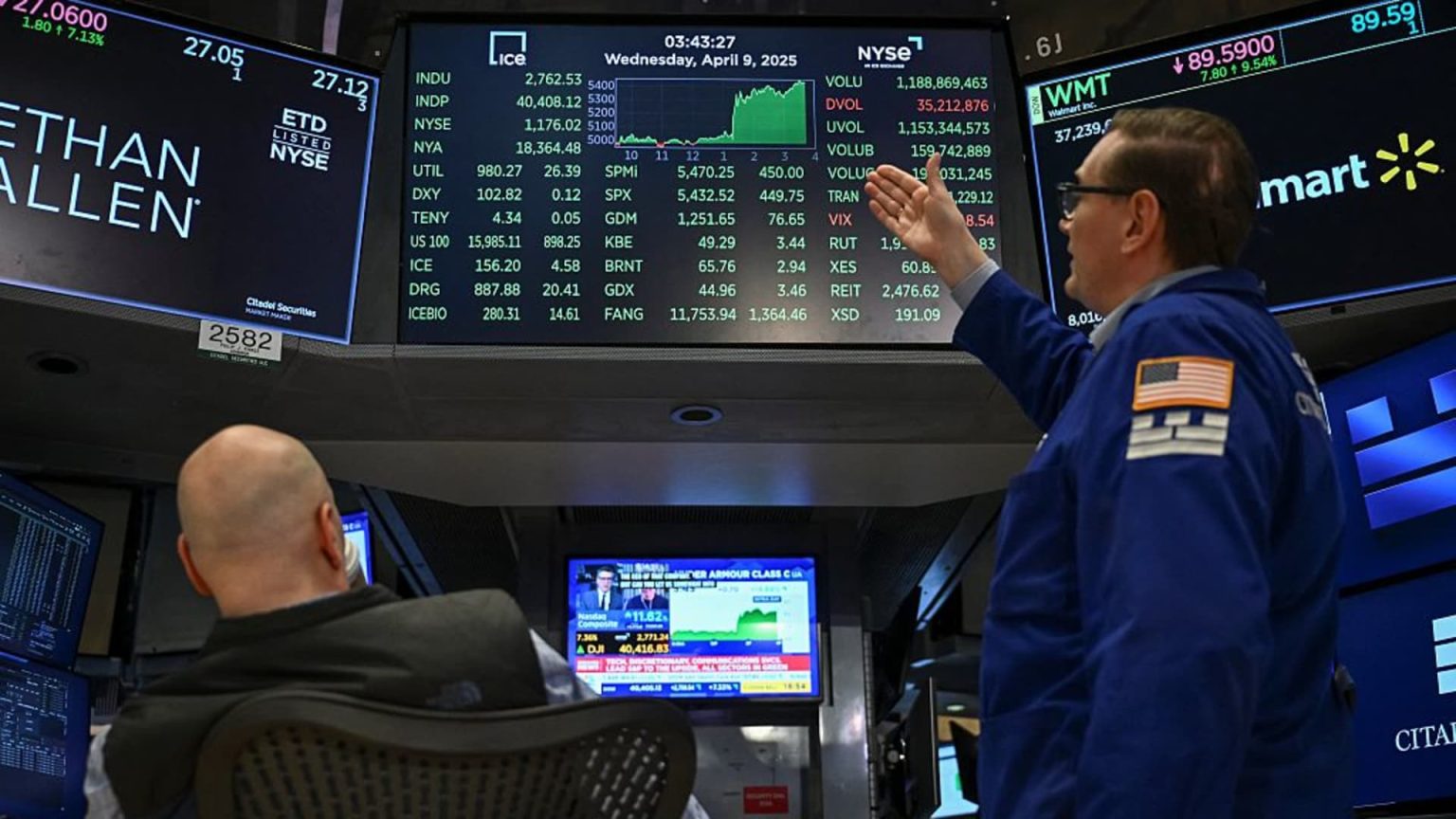Global investors are re-evaluating their engagement with U.S. markets, as highlighted by economic expert Rebecca Patterson, who recently observed significant shifts during the World Bank and International Monetary Fund meetings. These changes, driven by concerns over U.S. economic policies and reliability as a global partner, may lead to a considerable sell-off of U.S. assets. With foreign investments exceeding $31 trillion, even minor adjustments in allocations could significantly impact U.S. market stability.
| Article Subheadings |
|---|
| 1) Shifting Dynamics in Global Investment |
| 2) The Expanding U.S. Asset Portfolio |
| 3) The Risk of Capital Flight |
| 4) Comparative Performance of Global Markets |
| 5) Long-term Implications for U.S. Markets |
Shifting Dynamics in Global Investment
As global investing evolves, a notable structural shift is occurring concerning U.S. assets. According to Rebecca Patterson, former chief investment strategist at Bridgewater, foreign investors are beginning to reassess their exposure to U.S. markets, primarily driven by apprehensions related to tariffs and America’s standing as a reliable partner on the world stage. In her analysis, Patterson highlights that numerous foreign investors are weighing their options and considering a reduction in their stakes within U.S. markets.
Patterson’s insights emerged from discussions with participants at the recent World Bank and International Monetary Fund meetings, underscoring the collective trepidation among global financial stakeholders about U.S. economic policy’s unpredictability. More specifically, there is a growing fear regarding the potential weaponizing of capital markets, whereby America could leverage its financial influence to further its economic objectives.
The Expanding U.S. Asset Portfolio
The U.S. remains a principal player in the global investment landscape, with foreign investors holding over $31 trillion in U.S. assets as of last June. This figure represents an increase of $4.4 trillion from the previous year, a period marked by historic highs in U.S. markets, primarily fueled by substantial gains in technology stocks and the emergence of artificial intelligence as a dominant sector.
However, Patterson cautions that the vast accumulation of U.S. assets could be at risk if foreign investors decide to pull back. With a multitude of uncertainties surrounding U.S. economic policies, she argues that investors are contemplating a strategic thinning of their U.S. allocations, effectively adjusting their risk profiles in response to an increasingly volatile market environment.
The Risk of Capital Flight
A potential real-world implication of this shifting dynamic is the risk of capital flight from U.S. markets. Patterson elaborates, emphasizing that even a relatively minor 2% reduction in allocations from major global pension funds and sovereign wealth funds could lead to substantial outflows, potentially amounting to $1.2 trillion shifting out of the U.S. markets.
This shift would represent approximately 2.3% of the S&P 500’s total market capitalization, a significant figure that could disrupt the stability and growth prospects of U.S. equities. However, Patterson also stresses that such capital flight is unlikely to occur instantaneously. Investment committees typically deliberate over major shifts in strategy, which means any potential sell-off would transpire gradually.
Comparative Performance of Global Markets
The performance of U.S. stocks thus far in 2025 has not kept pace with global markets, with the S&P 500 reflecting a decline of 4.7%. In stark contrast, European equities, as represented by the broad-based STOXX 600 index, have seen a gain of 5.7%, and the MSCI AC Asia Pacific index has risen by 2.4% within the same timeframe. This divergence raises concerns about the broader attractiveness of U.S. investments relative to their global counterparts.
Investors may find themselves enticed by the more positive growth trajectories observed overseas, further exacerbating the potential for reduced allocations to U.S. markets. As global diversification strategies gain traction, it becomes imperative for U.S. market proponents to present compelling arguments demonstrating the relative value of U.S. assets.
Long-term Implications for U.S. Markets
The long-term implications of these trends underscore a pressing concern for U.S. market stability. A systematic reduction in foreign investment could present critical challenges, prompting a reevaluation by domestic stakeholders about the resilience of U.S. markets in the face of changing global perspectives.
Patterson foresees a “slow bleed” of support exiting U.S. markets; investors increasingly divert their resources back to their home markets or into emerging opportunities, such as alternative investments in gold. The ongoing dialogue about both domestic economic policies and international relations will likely play a fundamental role in shaping future investment decisions and market behaviors.
| No. | Key Points |
|---|---|
| 1 | Foreign investors reassessing exposure to U.S. markets due to economic uncertainties. |
| 2 | U.S. assets held by foreigners surpass $31 trillion, posing risks of capital flight. |
| 3 | Small shifts in investment allocations can result in substantial outflows from U.S. markets. |
| 4 | U.S. equities underperform compared to European and Asian markets in 2025. |
| 5 | Long-term implications could threaten the stability of U.S. markets amid growing global competition. |
Summary
As global investors rethink their strategies, the U.S. market faces potential challenges stemming from reduced foreign investment. With concerns about tariffs and the U.S. as a dependable partner on the rise, investors are likely to recalibrate their portfolios, which could lead to significant capital outflows from U.S. assets. These developments warrant close attention, as they may greatly influence the future trajectory of U.S. markets and their ability to attract global capital.
Frequently Asked Questions
Question: Why are foreign investors concerned about U.S. markets?
Foreign investors are increasingly worried about economic uncertainties, tariffs, and the reliability of the U.S. as a global partner, prompting a re-evaluation of their investments.
Question: What impact could a 2% reduction in foreign investment have on U.S. markets?
A 2% reduction could lead to a capital outflow of approximately $1.2 trillion, significantly affecting the market capitalization of U.S. assets like the S&P 500.
Question: How have U.S. equities performed compared to global markets in 2025?
In 2025, U.S. equities have underperformed, with the S&P 500 down 4.7%, while European and Asian indices have reported gains, raising concerns about their competitiveness.


